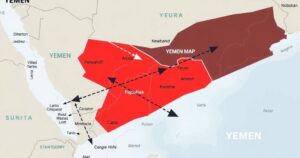Colombia Enters China’s Belt and Road Initiative, Navigating U.S. Tensions

Colombia has joined China’s Belt and Road Initiative, marking a major shift in foreign policy amid tensions with Trump’s U.S. administration. The memorandum signed highlights expected cooperation in trade and infrastructure, but details on funding and specific projects remain vague. Concerns over potential U.S. retaliation linger as Petro seeks to counter traditional American influence in the region.
Colombian President Gustavo Petro has formally announced that Colombia will join China’s Belt and Road Initiative, an extensive geoeconomic project that now spans over 140 countries. During a ceremony on Wednesday, a memorandum of understanding was signed, signaling increased cooperation in trade and infrastructure between Colombia and China. This move marks a notable shift for Colombia, which has long been viewed as one of the strongest allies of the United States in the region.
Petro’s decision comes amid mounting tensions between his administration and former U.S. President Donald Trump, especially following a contentious deportation dispute in January where Trump threatened to impose hefty tariffs and revoke visas for government officials. As Petro embarks on a week-long visit to China, he has made clear his intentions to strengthen ties with the Asian superpower, indicating a potential realignment of Colombia’s foreign relationships.
In a speech delivered to supporters in Bogotá prior to his departure to China, President Petro remarked, “I am not in a trade competition with China or the United States. Colombia will be won by whoever makes the best offer during the bidding process.” This acknowledgment of a level playing field may resonate with many Colombians who feel that the U.S. no longer holds exclusive sway over their nation’s interests.
Colombia’s economic engagement with China has been gradually increasing; in fact, the two nations established a working group to deliberate on joining the Belt and Road Initiative earlier this year. However, the memorandum signed lacks concrete project details or funding commitments. It provides a framework for potential cooperation but is not legally binding, leaving an exit route for any future government that might oppose it.
Sergio Gúzman, director at Colombia Risk Analysis, suggested that the signing of the memorandum is more of a “political move” than an outright economic strategy. His take is that it serves as a challenge to Trump’s influence and aspirations within the region. Furthermore, Petro made a pointed critique of American hegemony, stating, “Colombia is free to talk to China. What harm has China done to us? Did it invade us, did it take Panama from us?” This remark alludes to historical tensions surrounding regional sovereignty and U.S. foreign policy.
However, there are apprehensions among Colombian business leaders about potential U.S. retaliation as a result of this pivot toward China. Javier Díaz Molina, president of Colombia’s National Association of Foreign Trade, mentioned ongoing indications that the U.S. might pressure its partners for preferential treatment. Despite existing tariffs on Colombian exports such as petroleum and coffee, many in the business community remain committed to maintaining strong relations with Washington, fearing that reliance on China could lead to unfavorable outcomes.
In summary, Colombia’s recent alignment with China’s Belt and Road Initiative illustrates a significant shift in its foreign relations, traditionally dominated by U.S. influence. As President Petro seeks to diversify Colombia’s economic partnerships, the reactions from both American leadership and local business communities indicate a complex geopolitical landscape ahead. The long-term impacts of this decision remain to be seen, particularly as political shifts may influence future agreements and economic realities.
Original Source: www.miamiherald.com








